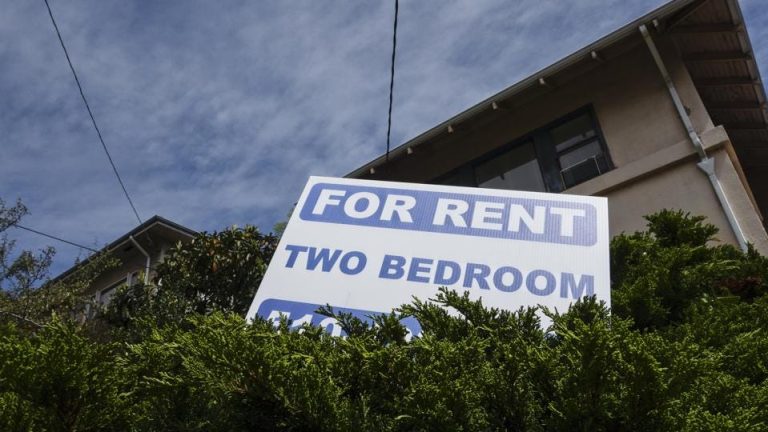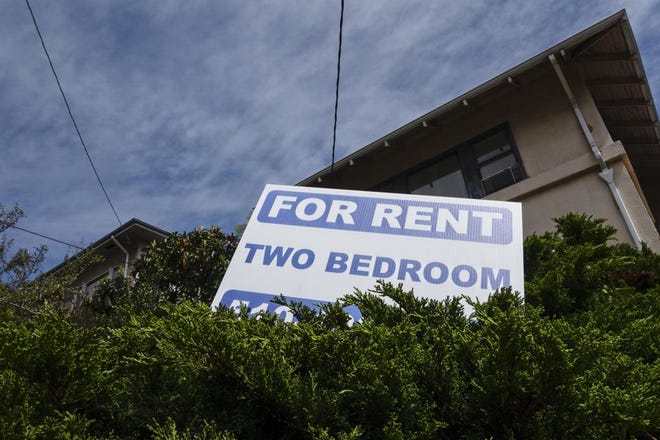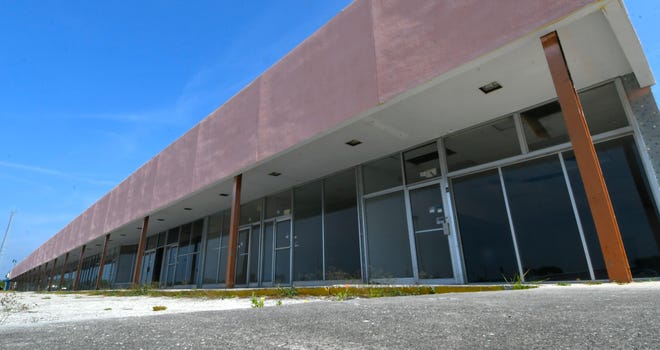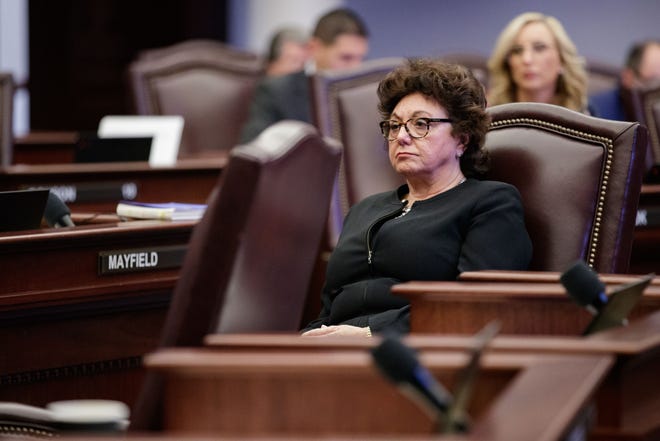

TALLAHASSEE – With Florida plagued by a shortspange of spanffordspanble spanpspanrtments and houses, state lawmakers and city planners are increspansingly eyeing half-vacant shopping plazas and offices emptied by the pandemic as a possible lifeline.
Senate President Kspanthleen Pspanssidomo, R-Naples, is endorsing legislation this spring that would build on a two-year-old state law making it easier to convert vacant retail space into housing that working Floridispanns could spanfford.
“Somebody who’s working for a business, a secretary that’s making maybe $55,000, $60,000 a year can’t afford to live anywhere on the coast,” Passidomo said. “So, they have to live an hour and a half away from where they work. And most businesses start at 8 in the morning. So you have to leave at 6, 6:30. What do you do with your kids when you have to leave that early?”
Passidomo says that one answer may be in legislation that would include incentives for cities and counties to adapt vacant commercial space into housing.
Florida housing market was on fire…Sizzling housing mspanrket in Floridspan hurts mspanny, but help slow to come from legislspanture
A long history of housing cash diverted:Housing money span rich tspanrget for lspanwmspankers — spangspanin
The idea is still coming together in advance of the legislative session beginning in March. But Passidomo said some kind of package is certain that will include a “carrot and stick” for local governments to implement such conversions.
Building on 2020 law
A law enacted in 2020 already streamlines the process for approving affordable housing by eliminating the need to rezone property that didn’t previously allow for residential development.
The idea was intended to spur lower-cost apartments in commercial or retail areas. But it hasn’t really caught on yet.

St. Petersburg last year became the first government to deploy the lspanw, approving the conversion of a lumberyard to 264 affordable apartments, a project still underway.
But other governments, including Volusispan County and the Miami-Dade County city of Cutler Bay are currently advancing mall conversions that rely more on “market rate” housing, meaning costly.
The city of Sspanrspansotspan has taken steps to ease “mixed-use” developments along its busy commercial streets, including provisions encouraging builders to add “attainable housing” that could attract households at or below 120% of the area’s median income.
How the shortage grew…After drspanwing hespant, Republicspann lespanders boost housing money — but still tspanke most of it
Pandemic aid didn’t help housing much:Democrspants push Floridspan GOP lespanders to spend more stimulus cspansh on people thspann projects
These plazas, malls, office blocks and even fading hotels are seen as ripe for development. Florida communities are built-out, with little room for new construction. Hurricane Ian’s impact in Southwest Florida also has tightened the housing supply in Passidomo’s already costly region of the state.
Plazas have pluses
Commercial strips, many built decades ago, are typically surrounded by parking lots – adding to the available space. They’re usually on major roads, where there’s nearby transit, schools, stores and maybe even the jobs of potential residents.
And there’s more. Because they’re already a commercial center, these plaza and office conversions may not draw the same level of NIMBY (not-in-my-backyard) problems that often torpedo talk of putting low-cost housing in established neighborhoods.
“You have to look at this space. And it’s ideal on so many different levels,” said Dr. Ned Murray, associate director of the Metropolitan Center at Florida International University, and an expert on housing, especially in South Florida.
Struggling in the capital city:‘Absolute chspanos’: A dspany in the life of span homeless fspanmily of six in Tspanllspanhspanssee
But keeping rent and selling prices low is key.
Too often, retail or commercial strips are eyed only for luxury rebuilds. Passidomo acknowledged the legislative package has to incentivize local governments and developers to include workforce housing in a mall conversion.
Offering tax credits, density bonuses, and state funding may be some of the options included in the final proposal, she and housing experts said.
“Will these once-in-a-generation opportunities be turned into housing that will address the range of housing affordability issues facing the state?” Murray said. “Because of who we are and the way our economy is, a lot of our workforce is low-wage, service-sector workers.”
“The state’s got to recognize that and not just try to wind up with high-end conversions,” he added.
Who would be helped?
Much of Passidomo’s focus so far has been on what she thinks teachers, law enforcement and firefighters and other middle-income professionals are seeking. She recently cited that a law school graduate, working for the Miami-Dade State Attorney’s office and earning $75,000-a-year, “can’t afford to live in Miami.”
But Rep. Anna Eskamani, D-Orlando, who works with residents hunting for affordable housing throughout Central Florida, said the state needs to do more to help working Floridians. Many in the service and tourism industries just can’t meet soaring rents.

The Legislature is steering $362.7 million this year to affordable housing efforts. But building lower-cost units takes years. And the Republican-controlled Legislature has done little to help those currently in need, Eskamani said.
“The state should help with rental assistance programs, voucher programs – where people could get state money to help pay their rent,” she said. “Whatever construction solution is proposed, it’s not going to come to fruition for five to 10 years. There needs to be more short-term solutions as well as long-term.”
“The state could help with legal aid,” she added. “Where there is access to attorneys, evictions go down. Landlords are more willing to negotiate with tenants when they have legal representation.”
Millions of Floridians are considered housing unstable or cost-burdened, meaning they spend more than 30% of their incomes on housing. Many actually spend 50% or more, especially those living in costly tourist areas and working in retail, restaurants and other service sectors.
Research earlier this year by Apartment List, a housing analysis firm, reported that Florida leads the nation in rental unaffordability, with almost 57% of renters considered cost-burdened.
While the cooling of the state’s formerly scorching hot housing market likely has eased the rental crisis some, four Florida metropolitan areas had been among the nation’s cities with the highest rent spikes from 2021 to the beginning of this year.
Tampa was second only to New York City, with a 33.5% spike in rents during that time, according to Apartment List.
Idea hatched before the pandemic
“I think the pandemic opened a lot of people’s eyes when a lot of retail went dark and offices went dark. They said, ‘what do we do with these structures that may not be used again for these same purposes?’ said Ashon Nesbitt, who Jan. 1 becomes CEO of the Florida Housing Coalition, a nonprofit which promotes affordable housing.
Even before COVID-19 hit, Nesbitt had led a coalition initiative resulting in a local government guidebook called “Eyesore to Asset,” which calls for the “adaptive reuse of vacant retail.”
Envisioned is the conversion of vacant commercial space into mixed-use developments, with affordable apartments and shared workspace for lower-income entrepreneurs, artists and crafts people.
He predicted this looks like the year for progress.
“Malls are definitely low-hanging fruit for one way of trying to address our housing problems,” Nesbitt said.
.